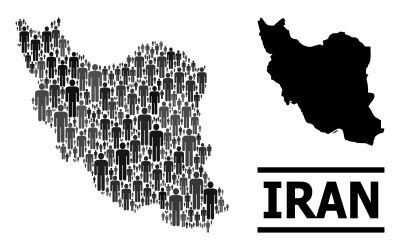|
|
David P. Goldman, economist, music critic, and demographer, spoke to a May 16 Middle East Forum Webinar (video) about Iran’s increasingly dangerous threat to the region as the Islamic Republic faces a “demographic catastrophe” with “the disappearing young people of Iran.”
Goldman said “religious ideology and fanaticism” aren’t the Iranian mullahs’ only motivations to “engage in a strategic confrontation” in the region. This hostile approach is also attributable to declining demographics that will have “catastrophic consequences” on the regime, the economy, and Iranian society.
Official U.N. statistics indicate that Iran’s fertility rate is 2.1 children per female, the approximate replacement rate. Goldman revealed that Iran’s actual fertility rate, as reported last October in the Tehran Times, is 1.6, which he explained is key when examining “the rate of change, not just the absolute level.” He said that “two parents supported by one child in a poor country ... [is] an impossible situation.” Worse still, except for its ethnic minorities, the “core Persian provinces” have even lower fertility rates. Given both the “miserable state of the economy” and food shortages, there are few “financial incentives” for the population to reproduce.
Goldman said the decline in Iran’s fertility rate means that by mid-century, the proportion of elderly who are dependent upon younger and employed Iranians, now at the “barely sustainable” rate of 33 percent, will increase to 60 – 70 percent. Although the elderly in a richer, industrial country can live off savings, it is “impossible” in a poor country like Iran. Moreover, Goldman said, Iran “has the highest level of infertility of any country in the world,” as well as the world’s “highest levels of venereal disease” resulting from “temporary marriage” [Iran’s practice of Sigheh allows men to “marry” a woman for a pre-determined time, have intimate relations with her, and then leave her with no consequences].
The impending demographic catastrophe traces to “literacy rates versus fertility rates” in Muslim countries as they “transition to modernity.” With increased literacy, the transition occurs “very suddenly.” In earlier, traditional times, agricultural societies had higher fertility rates so that larger families could benefit from “inexpensive labor.” In the 1970s, the Shah of Iran’s enactment of a literacy program ultimately resulted in a reduction in the fertility rate from 7.0 children per woman to the current rate of 1.6. Goldman said this dramatic reduction was exacerbated by the transition “from a rapidly expanding population to a rapidly aging population” lacking the resources to support it.
Another noteworthy statistic is the U.N.'s combined population projection for Afghanistan and Pakistan. The projection includes greater numbers of fighting age men in these two countries, which means that a Sunni “population explosion” will surround Iran and “overwhelm” the country as its own younger population shrinks. “Even though Iran has a higher level of education” with more “scientific and military capabilities” than the Sunni countries, Goldman predicted that Iran will suffer a “brain drain,” with the “smartest of them” emigrating. He said the “strategic implications” of these demographic projections are that it creates a “use it or lose it problem,” i.e., Iran will act aggressively to advance a “Shia Crescent” extending from the “Indian Ocean to the Mediterranean.”
Goldman concludes that over the next decade and a half, an unstable Iran, “prone to military adventurism,” will pose the most dangerous threat to the world. He sees “an analogy today between Iran and Nazi Germany, between 1933 and 1945,” in that they share an ideology of “apocalyptic desperation” whereby lower birthrates place them in an existential position demanding the expansion of their territory through war. For this reason, Goldman believes that, assuming current “military cooperation” between Iran and Russia will lead to high-tech “air defenses,” it is “delusional” for the Biden administration to think reviving agreements, reducing sanctions, and pouring more money into Iran will be anything more than “a fool’s errand.” He thinks the Iranian regime is “a ticking time bomb,” and the only option to “discourage” its ambitions of a “Shia empire” is to make it clear that “the use of force will prevent them from doing so.”





